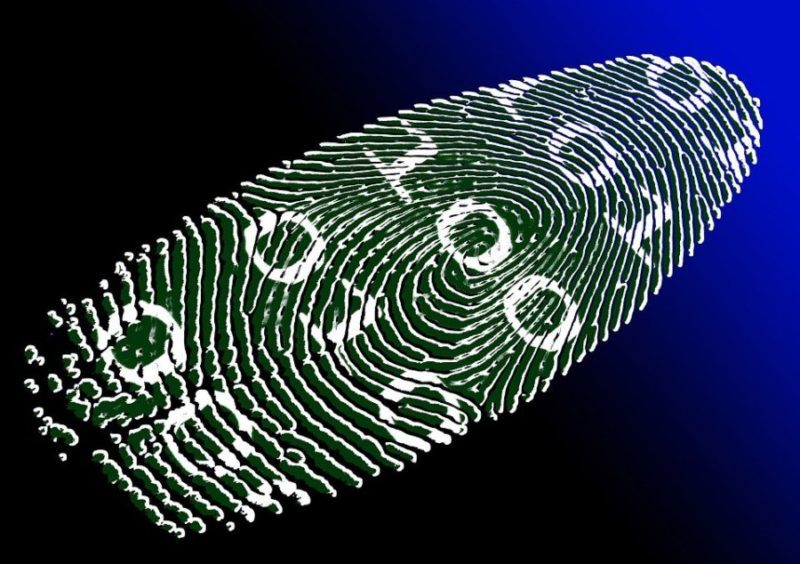The Most Important Technology Trends in the Metaverse Ecosystem for 2022
Trends are shaping the Metaverse Ecosystem Future
The Metaverse ecosystem, dubbed “the future of the internet” by some and “the next major tech platform” by others, is sweeping the globe.
Though there are still some differences in definitions of the Metaverse, experts agree that it will assist in bridging the gap between our digital and real-world identities. In other words, we’ll be closer than ever to a computer-assisted world.
Some of the world’s largest tech businesses are now investing in the Metaverse ecosystem, emphasizing its importance as a critical trend for its future online world. Facebook went Meta, Microsoft doubled its R&D budget for metaverse-related purchases, and Adobe even upgraded Photoshop to assist the generation of Metaverse-ready NFTs.
It’s critical to grasp some of the themes driving and affecting metaverse technology in 2022 if you want to be first in the curve.
Hardware improvements and spatial audio
One of the critical technologies in the Metaverse’s construction is Extended Reality. Though there’s more to this new environment than XR, extended reality tools can enable us to interact with digital communities and settings in ways we’ve never experienced before. We’ll be communicating with teams in virtual surroundings and designing new items with holograms in the future Metaverse ecosystem.
We’ll need more in-depth XR experiences in a world where digital and real-world content is continuously colliding. It will necessitate the creation of better, more immersive experiences, which will require the development of higher-quality images and fantastic spatial audio.
We’ll need the tools we use to interact online to feel as natural as walking into a room at the office for stepping into digital worlds to feel as raw as strolling into a space at the office. As hardware improves, lightweight smart glasses will replace cumbersome headsets, and hands-free wearables will seem like a natural replacement to smartphones.
Also, read – GUILD Atelier in Tallinn Has Entered the Fashion Metaverse Property
Avatars with Extremely Realistic Details in the Metaverse Ecosystem
The concept of a “Virtual self,” or a digital version of our identity that we may construct and cultivate online, is being given more attention in the Metaverse.
Hyper-realistic avatars will allow people to express themselves more fully online and engage with others deeper in this environment. The promise of digital avatars is already affecting a large number of businesses.
Burberry has already created virtual versions of their storefronts, and fashion houses have sold NFT apparel items that individuals may apply to their avatars in a virtual world. As we progress deeper into the Metaverse ecosystem, the emphasis on creating hyper-realistic avatars will only grow.
The more lifelike these avatars get, the deeper our communication sessions become, and the more robust online events and digital encounters feel. We may nearly “teleport” versions of ourselves into other places, removing the need for travel. We may even reach a stage where employing mixed reality.
Cybernetics and motion tracking in the Metaverse Ecosystem
Making our interactions with machines more accessible and straightforward is a significant aspect of the Metaverse. We’ll be able to engage with things by speech, motion, and even eye movement, instead of having to type requests into a computer or smartphone. In the domain of extended reality, we’ve already seen examples of this.
Gradually, we’re moving from a time when we looked at computers and digital surroundings from the outside into a day when we’ll be in both virtual and physical worlds simultaneously. To achieve this environment, virtual reality (VR) engineers will need to construct more powerful tracking technology that can track every movement or gesture made by a user.
At the same time, the incorporation of additional feedback from the digital landscapes we interact with may be part of the connection between the digital and physical world. Our journeys into the Metaverse ecosystem will be more memorable and real thanks to haptics, which allows us to “touch” stuff from a digital realm and interact with it in the actual world.
Platforms with Low-Code and Development Opportunities in the Metaverse Ecosystem
Notably, the Metaverse ecosystem isn’t just about using extended reality to bring people together; it’s also an idea that relies on a shift to a new internet environment.
The Metaverse will propel us closer to the Web3 future when creators and developers reclaim control of their online content and individuals reclaim the power of their own identities.
We need to create an open atmosphere where more individuals can construct and develop to have an equal say in shaping the new metaverse landscape. For this, low-code and no-code application platforms are excellent.
We’ll have a more significant number of people contributing to the new internet era if more platforms enable citizen developers in the future Metaverse ecosystem.
While professionals with the necessary programming skills will continue to be in high demand, Gartner estimates that about half of major companies will use low-code platforms to develop at least some of their infrastructure.
Blockchain and Digital Assets’ Ascension in Metaverse Ecosystem
With the advent of a new open, decentralized internet, there is a greater emphasis on blockchain for data management transparency. Blockchains provide decentralized authority, as well as easy, trustless data exchanges.
Many experts feel that the blockchain will be critical in establishing a secure and equitable metaverse. The blockchain also assists in forming a new metaverse economy, one defined by artists’ ability to sell their work and earn adequate remuneration for their efforts.
Non-fungible tokens, or NFTs, are an exciting component of the Metaverse ecosystem because they allow individuals to sell everything from data to services and experiences while benefiting the artist or creator behind each asset.
What is the Future of Metaverse Ecosystem?
The Metaverse foresees a data-rich future replete with concepts such as digital twins, the “Internet of Everything,” an artificial intelligence’s ascent.
Above all, it’s pointing us toward a future of digital communities and web-based civilizations in which everyone has greater control over their digital identities, lives, and data.
Stay informed with daily updates from Blockchain Magazine on Google News. Click here to follow us and mark as favorite: [Blockchain Magazine on Google News].
Get Blockchain Insights In Inbox
Stay ahead of the curve with expert analysis and market updates.
latest from tech
Disclaimer: Any post shared by a third-party agency are sponsored and Blockchain Magazine has no views on any such posts. The views and opinions expressed in this post are those of the clients and do not necessarily reflect the official policy or position of Blockchain Magazine. The information provided in this post is for informational purposes only and should not be considered as financial, investment, or professional advice. Blockchain Magazine does not endorse or promote any specific products, services, or companies mentioned in this posts. Readers are encouraged to conduct their own research and consult with a qualified professional before making any financial decisions. The featured image used is just a creative depiction of the title and it does not intend to hurt sentiments of any person or institution. If it hurts anyone sentiments, please do not hesitate to reach out to Blockchain Magazine.

 Bitcoin
Bitcoin  Ethereum
Ethereum  XRP
XRP  Tether
Tether  Solana
Solana  Dogecoin
Dogecoin  USDC
USDC  Cardano
Cardano  Lido Staked Ether
Lido Staked Ether  TRON
TRON  Chainlink
Chainlink  Avalanche
Avalanche  Wrapped stETH
Wrapped stETH  Wrapped Bitcoin
Wrapped Bitcoin  Sui
Sui  Toncoin
Toncoin  Stellar
Stellar  Hedera
Hedera  Shiba Inu
Shiba Inu  WETH
WETH  Polkadot
Polkadot  LEO Token
LEO Token  Litecoin
Litecoin  Bitcoin Cash
Bitcoin Cash  Bitget Token
Bitget Token  Hyperliquid
Hyperliquid  Official Trump
Official Trump  Uniswap
Uniswap  USDS
USDS  Wrapped eETH
Wrapped eETH  Pepe
Pepe  NEAR Protocol
NEAR Protocol  Ethena USDe
Ethena USDe  Aave
Aave  Aptos
Aptos  Internet Computer
Internet Computer  Monero
Monero  WhiteBIT Coin
WhiteBIT Coin  Ethereum Classic
Ethereum Classic  Ondo
Ondo  Cronos
Cronos  POL (ex-MATIC)
POL (ex-MATIC)  Mantle
Mantle  Render
Render  Dai
Dai  MANTRA
MANTRA  Algorand
Algorand 




